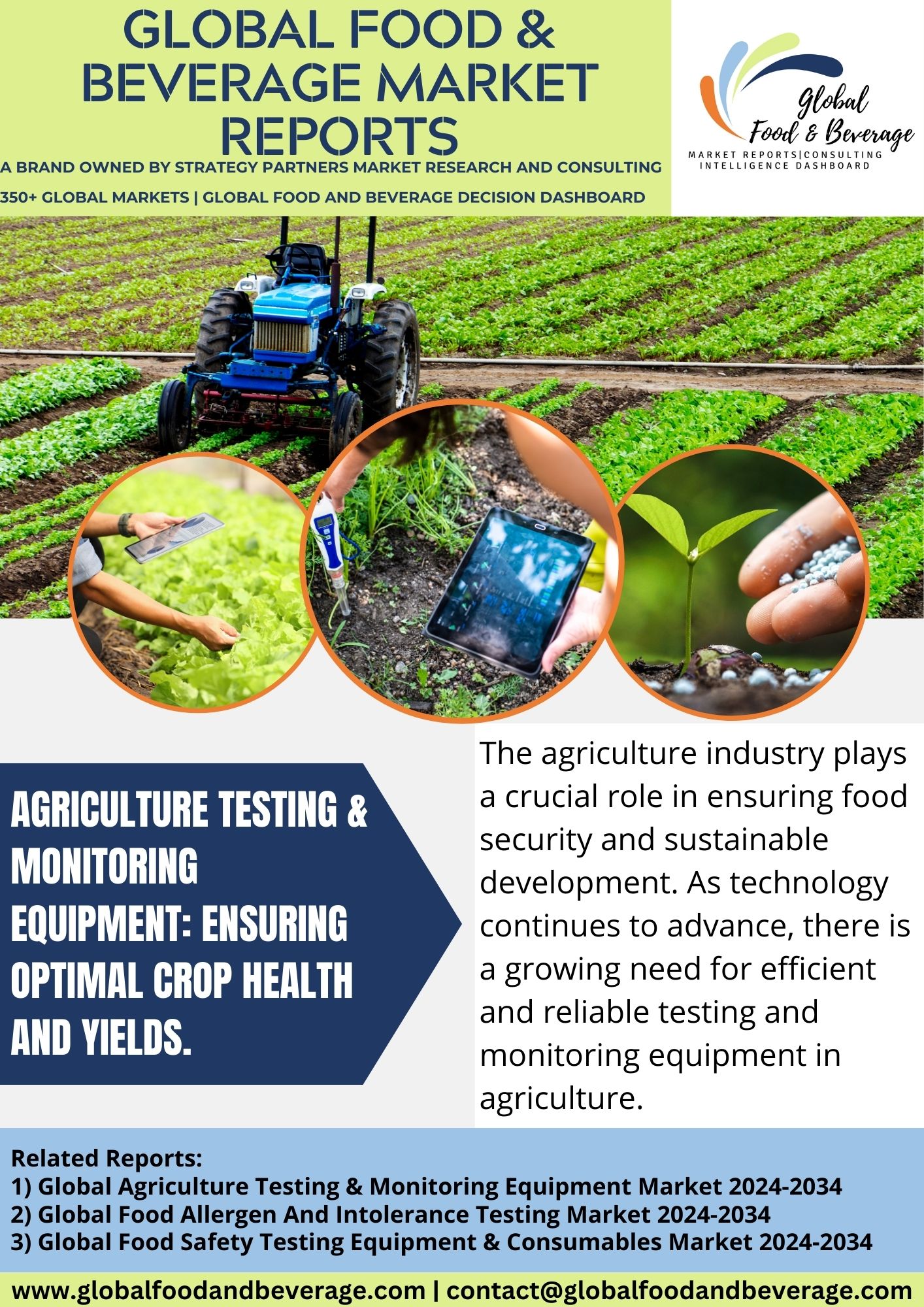Agriculture Testing & Monitoring Equipment: Ensuring Optimal Crop Health and Yields
The agricultural industry is facing a multitude of challenges, from climate change and resource scarcity to increasing demand for food. To meet these challenges and ensure sustainable food production, farmers are turning to agriculture testing and monitoring equipment. This equipment provides valuable data and insights of agriculture testing that can help farmers make informed decisions about their crops, optimize resource use, and improve yields.

Types of Agriculture Testing & Monitoring Equipment:
Soil Testing Equipment:
Soil testing is essential for understanding the nutrient content, pH level, and organic matter composition of the soil. This information helps farmers determine the appropriate fertilizers, amendments, and irrigation practices for their crops. Common soil testing equipment includes soil probes, pH meters, and nutrient analysis kits.
Plant Tissue Testing:
Plant tissue testing analyzes the nutrient levels in plant leaves, petioles, or stems. This provides insights into the plant’s nutritional status and helps identify any nutrient deficiencies or imbalances.
Water Quality Monitoring Equipment:
Water quality is crucial for plant health. Water quality monitoring equipment measures parameters such as pH, electrical conductivity, dissolved oxygen, and nitrate levels. This information helps farmers ensure their irrigation water is suitable for their crops and prevents water pollution.
Weather Monitoring Equipment:
Weather conditions significantly impact crop growth and development. Weather monitoring equipment, such as rain gauges, temperature sensors, and wind speed meters, provides farmers with real-time data on weather conditions. This information helps them make informed decisions about planting, irrigation, and pest and disease control.
Remote Sensing Equipment:
Remote sensing technologies, such as drones and satellites, collect aerial images and data of crops. This data can be used to monitor crop health, identify stress areas, and assess yield potential.
Precision Agriculture Equipment:
Precision agriculture utilizes technology to manage crops on a field-by-field or even plant-by-plant basis. This includes equipment such as GPS-guided tractors, variable rate applicators, and yield monitors. Precision agriculture equipment helps farmers optimize resource use, reduce waste, and improve yields.
Challenges
Some of the common challenges associated with agriculture testing and monitoring equipment include:
Cost:
High initial costs: Acquiring advanced testing and monitoring equipment can be expensive, especially for small-scale farmers or those in developing regions.
Maintenance expenses: Regular maintenance and calibration can add to the overall cost of ownership.
Technological Complexity:
Skill requirements: Operating and interpreting data from sophisticated equipment may require specialized training, and not all farmers have the necessary skills.
Compatibility issues: Integrating different types of equipment or ensuring compatibility with existing farm management systems can be challenging.
Data Management and Interpretation:
Data overload: Modern equipment generates large volumes of data, and farmers may struggle to manage and make sense of this information.
Interpretation challenges: Understanding the implications of the collected data and translating it into actionable insights can be a barrier.
Accessibility and Connectivity:
Remote locations: Farms in rural or remote areas may face challenges in accessing reliable internet connectivity, hindering real-time data transmission and analysis.
Compatibility with existing infrastructure: Some equipment may require specific infrastructure or network compatibility that is not readily available in certain regions.
Calibration and Accuracy:
Calibration requirements: Regular calibration is essential for maintaining the accuracy of testing and monitoring equipment, and failure to do so can lead to inaccurate results.
Environmental factors: External conditions such as temperature, humidity, and soil composition can affect the accuracy of measurements.
Durability and Reliability:
Harsh environmental conditions: Agriculture takes place in various climates, and equipment must be durable enough to withstand exposure to elements like dust, rain, and extreme temperatures.
Longevity: Equipment should have a sufficiently long lifespan to justify the investment and ensure reliable performance over time.
Regulatory Compliance:
Compliance issues: Agriculture testing equipment may need to adhere to specific regulations or standards, and ensuring compliance can be a challenge for manufacturers and users.
Education and Adoption:
Awareness and education: Farmers may not be aware of the benefits of using testing and monitoring equipment or may lack the knowledge to effectively implement these tools.
Resistance to change: Traditional farming practices can be deeply ingrained, and some farmers may be resistant to adopting new technologies.
Data Security and Privacy:
Security concerns: The collection and storage of sensitive agricultural data raise concerns about privacy and the potential misuse of information, necessitating robust security measures.
Benefits of Using Agriculture Testing & Monitoring Equipment:
Improved Crop Yields and Quality: By understanding the specific needs of their crops, farmers can optimize growing conditions and nutrient management, leading to higher yields and better-quality produce.
Reduced Costs and Waste: Testing and monitoring equipment helps farmers identify and address problems early, preventing yield losses and reducing the need for unnecessary inputs such as fertilizers and pesticides.
Enhanced Sustainability: By using resources more efficiently and minimizing environmental impact, agriculture testing and monitoring equipment contribute to sustainable agricultural practices.
Improved Decision-Making: Data-driven insights from testing and monitoring equipment empower farmers to make informed decisions about their crops, leading to better overall farm management.
Conclusion:
Agriculture testing and monitoring equipment is a valuable tool for farmers in today’s challenging agricultural landscape. By providing data and insights into crop health, soil conditions, and environmental factors, this equipment empowers farmers to make informed decisions that optimize yields, reduce costs, and promote sustainable agricultural practices. As technology continues to advance, we can expect even more innovative and sophisticated testing and monitoring equipment to emerge, further revolutionizing the agricultural industry.
